Provenance: The Nolan Hirte Interview.
The coffee bug bit Proud Mary Coffee owner Nolan Hirte more than two decades ago. The Australian has spent that time learning everything about what takes a coffee cherry from plant to cup. We visited Nolan at his riverside Oregon home and discovered his Ratio Six routine, drank probably too much coffee out of wine glasses, and talked for hours about his vision for boosting life-sustaining profits for coffee farmers. Here's our conversation, in video and print format.
Why do you love coffee?
Coffee is my life. I’m so blessed with coffee, and the joy that it brings me in bringing joy to others. A simple thing like making someone a cup of coffee brings me so much pleasure, and that has stayed with me. When I explored where to go with that or how, or what was behind all of that, I just fell further in love with where it came from and what it could be.

Why does coffee matter?
Coffee is one of the largest commodities in the world, coffee is the second most consumed drink in the world, second to water, and I think it is far more special than it gets really appreciated for. So we’ve been on a quest to change the way people perceive what coffee actually is and realize the true value of it, raise the price of it, and blow minds with it.
How have you gone about that?
I’ve been on a real quest to make the best cup of coffee possible on the planet. We’ve been chasing what that looks like, and it’s been this burning desire to make it better. And every time we ask that question, we’ve found ways to make coffee better. In coffee you can’t hide things; it shows up. Just like a wine, you can’t fake it, you know. And that really keeps us on our toes, every harvest. It changes with the weather and the season and the soil and how it’s produced. And then to make sure we’re doing our job showcasing the terroir, and the province it came from, and the hard work that was put into it. Coffee is something that is incredibly hard to land, something so special in the cup, and should be appreciated as such. It’s a very special drink.

Earlier you said something about the challenge of coffee, can you remember what you said about that?
Well, let me tell you a story, and I’ll answer the personal quest in the story, because it makes me think about where I started out. I started out washing dishes, and it was two weeks’ work experience in Christchurch, New Zealand. I’d studied hospitality, and I had to do this two weeks’ work experience, and I made sure I washed those dishes faster than anyone else, and they called me Turbo, and I got a job. It was in a place that took coffee really seriously. And I watched this kind of happening -- this amazing community that was coming into this cafe. One day, I’d been learning to make coffee for myself while washing dishes and the owner said, “Hey Nolan, if you want, you can make this coffee for the customer.” And I was so excited, I was like, “Yes!, I am going to make this the best coffee I possibly can.” So I put all of my attention and energy and focus into this one cup of coffee, and I send it out and I see it kind of going to the table and I’m looking back, and I see this lady grab her coffee and have a sip, and [sighhhh], shoulders roll back, this sigh I could hear from across the room, and she just sank into her seat. And it hit me, kind of like right here [pats heart] and, oh man, I did that, I made that happen for her! And it got me so excited about coffee and it became my personal quest to just keep making it better. How can we do little things that make coffee better?
I guess I would say that, having that special moment made it really clear to me that it was my personal quest to take coffee as far as I could. How could I improve it? How could we really get customers excited by coffee? It's obviously a rabbit hole, but one that we’ve really enjoyed going down.
Can you say specifically how you would bring the best out of coffee in the roasting and growing processes? How it’s all connected?
To explain, you know, obviously the goal is making coffee as good as we possibly could, and showcasing it and really kind of blowing people’s minds of what coffee could be. That process was, as a barista, when I thought of how I could possibly make coffee better. I focused on the coffee itself. Then in roasting, we realized we have to learn how to roast coffee. Why would I leave that to someone else? As soon as we bought a roaster and started roasting coffee…Uh, where does the green come from? And so there was this, from a barista, learning how to roast, from a roaster, learning how to source and where coffee comes from. Without all those pieces there was just no way we could make it better.

Talk about how you started at the end of the coffee process and worked your way upstream.
We’re talking about chasing the ultimate cup of coffee, making it as good as we possibly can. As a barista, I realized that if I’m going to make my coffee better, then I needed to understand what was happening in the roasting process. We bought a small one Kilo Giesen roaster, and started to learn how to roast. That meant that we needed to find the best green that we could possibly put in the roaster. And after buying expensive green from different places, we realized that maybe we should go to origin and see what’s really happening. And so it became this journey of: To be a better barista I needed to learn how to roast, to be a better roaster I needed to learn how to really grow coffee, and really, where did it come from and what those challenges were. And very quickly we realized that the biggest gap, and the most points that could go up in the cup, were going to come from where coffee was growing, not from who was roasting it or the barista that was pulling the shot.
Can you connect, or give us your thoughts on: You create this whole experience with food and with coffee, you have a postcard that talks about where the coffee came from, this correlates to charging higher prices for coffee both for whole bean and for a served beverage. How do those profits flow back to the producer to create a more sustainable and more long term source for this to keep working?
Well, I mean, 100 percent! I think the answer to that is, like reversing that, because organically how that happened, the reason there are cards on the table, the reason there is food, the reason there is heartwarming, really cared for service, is all about trying to educate and change perspective and tell the story so that we can raise the price. We need to raise the price so that we can pay what the farmers really need to earn to have a sustainable life. It makes me think of Honduras -- a place that we’ve really been able to make some impact with the people that we’ve worked with. I can remember Nahun Fernandez and Javier Fernandez, his brother, sitting me down right by the drying beds and kind of like, “Look, Nolan, can you, can you pay more for the coffees this year?” And we’re already paying four or five times the price of commodity coffee. And I’m scratching my head, because I know back in Australia, at the time, it was hard to sell coffee at a higher price. The only way we could sell coffee at a higher price would be to have something interesting to show the customer. So my request to the producer was: Okay, I want to pay you a higher price, then we need to do something special, so let’s do a natural process. And they were like, “Whoa, whoa, whoa, this is Honduras, we don’t do natural process [coffees], we’ve never done one before.” And I’m like, that’s okay. Here’s what we’re going to do, and we laid down some ground rules, we did a test batch, and we agreed to buy that lot regardless of what happens. And sure enough that first test lot was freakin’ amazing! And that turned into more the next year, and more the next year and suddenly they’re earning a lot more for their coffee and our customers are really excited about what they’re drinking.

How do you think about risk in the coffee world?
Here’s a statement I would say on risk, for coffee, because I think we, like a lot of things in life, we disassociate. We’re not really aware of where things come from or how it works, but often I’d tell people as a barista, you pull a shot, you’re making a latte or an espresso, you get it wrong, okay, three minutes later you’ve got another coffee you can present. So really quickly you can turn it around. As a roaster, you roast a batch of coffee, and you kind of need to wait a week or two before you really start to see it open up and what you’ve got and how well you did. As a producer, if you get it wrong...man, and you have to pull the plant out and start again. It's a good five years, seven years before we see that come to fruit. And so the risks are way higher for the producer. And they’re dealing with farming, which is super challenging as it is, but with coffee being such a low price point, it’s really, really challenging for them.
What do you want to see change about coffee?
I spoke about washing dishes and making my first cup of coffee and having my mind blown. The next big key thing was going to origin for the first time. My first trip was to Bali and then on to Sumatra. In Bali the women were earning a dollar a day, and the men two dollars a day, and the men seemed to be sitting around a whole lot more than the women were. And so straight off the bat, things just didn’t feel right, or seem right. And when I started to see how much work was involved to produce coffee, and we’re talking about a dollar or two dollars a day, it really, like, upset me. Later that year 12 of us went to Sumatra and we were high up on the mountain, Lake Takengon, beating down sun, looking down over the lake, picking coffee cherries, 12 of us picking coffee cherries for four hours. We came back with like twelve kilos of cherry. By the time that was processed and dried down we had two kilos of green, by the time we roasted that, a kilo and a half of coffee. One girl, on her own, in Sumatra picks 70 kilos a day and gets a dollar for it. When I could go through that process myself and feel that, it really, really upset me and I realized that we needed to disrupt the industry, we needed to become famous, we needed to become industry leaders, we needed to win competitions. We needed to change the way people see coffee so others could follow, and be a guiding light, an example, of what could be. And that’s really what we’ve been doing for the last 10 years.
So yeah, where could it be now? I guess the reason I wanted to share that story was because, in the last decade, we’ve been trying to make ourselves known, we’ve been trying to disrupt the industry, trying to shake up what the price of coffee is, and really, really challenge what people are comfortable paying for. And that’s been a lot of fun, it’s been real challenging, but it’s been a lot of fun. And a lot of those things have happened now. You know, a 20 dollar cup of coffee in Australia? It’s just another day. It’s not going to make it on the news. It would have, once upon a time. Your average customer in Australia understands what Gesha is, what Maragogype is, what Honey Process is. I think in the U.S. we’re also seeing this rapid growth and understanding and exploration of coffee. The pandemic in the last year, the growth for us has been on deluxe, special coffees. We haven’t been able to keep inventory on them, you know, they’ve been flying out. So, yeah, it’s been exciting to see the growth of where coffee is going.

Where should coffee go next?
I think that specialty coffee is such a small part of the market. I think there’s room to grow specialty coffee itself into just everyday life. I think people these days are really looking for the truth behind where things come from and feeling connected to it. I think there’s room for more people to be drinking quality coffee at home and making it more accessible for everyone, and explaining the differences of why. What the differences between not caring where it comes from, and paying a little bit extra. To me that relates to bread -- Like comparing a white loaf of bread to an ancient grain sourdough. You’re going to pay a different price. Same with cheese. Same with wine. I think coffee has yet to be understood in that same way, and there’s a movement in the hospitality industry to raise the bar with quality.
What I’ve been driven by is how to simplify the home brewing experience and make it consistent. No one is going to want to pay $25 for a bag of coffee if the first third is dialing it in.
Yeah, I think the challenge for coffee has been that it’s complicated to make it well. It’s always been like one of those things that, well, it doesn’t dissolve and so those grinds have to go somewhere. “What do you mean I have to grind it fresh? What do you mean scales? Why?” Suddenly there’s a lot of things to worry about with coffee as the end consumer. Whereas opening a bottle of wine -- just pull the cork off of it. That’s easy, I can do that! I’ll spend money on that. So, Australia, as an example, did not have any filter coffee at all, its espresso, or instant. If it’s at home, you’re drinking instant coffee, which leaves a lot to be desired, generally speaking. So, yes, we need to simplify things for the consumer to make good coffee at home.
I would love to hear you talk about why it’s worth all of the scales, grinding and complexity in relation to how much more complex coffee is as a beverage.
Coffee is so complex, and it gets underestimated. If you compare coffee to wine for a second, it often gets compared to wine, but wine has 220 chemical compounds, coffee has 800 plus. That’s far, far more complex than wine will ever be. However, it’s often roasted dark, and it has sugar added to it and milk poured on it, and that’s coffee. And that’s what we know of coffee. But really, it can be so much more, and the simple idea of putting it in a wine glass sounds, um, snooty and ridiculous. But when it’s got that many chemical compounds and that many aromatics and that much complexity, why wouldn’t you just enjoy that and savor that and trap those. Yeah, it really is absolutely worth pursuing excellence with coffee, because it's so rewarding when you get it right.
What I feel like saying is: Our mission at Proud Mary, what the opportunity that we saw all those years ago, was to really make breakfast something special, because it wasn’t. You couldn’t get a talented chef working breakfast. They were really, if you were a talented chef, it would be dinner. And then maybe lunch on the weekend. And so we saw this big gap in breakfast, and coffee obviously and breakfast go hand in hand. So really, the idea of elevating what breakfast could be, but also really pushing what can coffee be and giving coffee the platform to be something really special. And so talking of pairing coffee with food, and thinking of it kind of differently like we would a wine. That it needed to have really special food to go with it. It needed to have smiles to go with it. It needed to have heartfelt, warm, genuine kind of people behind it. And so we really set out to create the environment around the coffee that would really stand it up, and give it a platform to be special. There are so many amazing moments I can think of, particularly at the bar at Proud Mary, in Melbourne but also in Portland, where people are sitting down having their breakfast. It’s not just any old breakfast, it’s something really thought through and special, like hash brown and slow cooked pork belly and all the little details, and then reaching and sipping back on a fresh crop Gesha from Panama brewed as a pour over, and just completely like losing their minds when all these little things are just coming together. It really was creating these magic moments for people.
What are some of the most unique flavors you’ve ever tasted in coffee?
I mean I’ve had so many amazing coffee moments really exploring special coffees, and the coolest thing is that I can remember them so clearly. They don’t go from your memory bank. People talk about developing a palate, a lot of that is that the more you have those experiences, the more you can go back to it. Honduras blew my mind. When I first went to Honduras, and we’re cupping these coffees, and to get this really ripe, juicy peach, nectarine, stone fruit, black tea, and a little bit of floral. I just couldn’t believe that I was, that coffee could even do this! I was just so floored, and I think that one of the things that drove me so hard to keep pushing was that the more I traveled, the more I would experience these incredible moments at origin, and then the coffees would come back to us in Melbourne or in Portland, and something had gone. They weren’t the same. It was actually really challenging to land coffee back at home in the same quality that it was at origin. And so we’ve been really trying to find ways to, again, share those special cups of coffee that we’re finding and have someone else be able to experience it like that. I think of Panama Gesha and I can remember each year almost of what they were like. It’s like it’s burned in the brain. The first time I went to Panama, and I stayed in the Hartmann’s for a week, and we ordered Gesha from Hartmann's, we airfreighted it to Melbourne, and for some reason the thinking at the time was that that would be good for it. And this coffee must have sat on the tarmac in the monsoon, in the rain in Panama. By the time it made it to Melbourne, my manager got the box, and he’s like, “Hey Nolan, um, you sitting down?” What do you mean? He’s like, “Sit down.” Uh, okay. “The Gesha arrived from Panama, dude it’s covered in mold.” Ahh, what are you talking about? And it was just heartbreak. And so the Hartmann’s are also heartbroken, and they’re like, “Hey, look, our neighbors also have incredible Gesha.” That was all the Heartmann’s Gesha. “Our neighbor also has some, we’re going to send you some.” And so they sent us some coffee from, Santa Terressa was the farm, and it was the most mind blowing experience. It was this lemongrass, mandarin, tangerine, melon, all these things. When we first landed it, what I would say to the customer, first time putting Gesha on the table trying to explain why this was worth $10 a cup, and I would say to the customer, think of a toucan bird, a tropical hat and a bottle of fruit loops. And the customer would like have a sip and, “Oh yeah, yeah, I can see that!” Yeah, it’s incredible what it can do and over time I’ve noticed how it makes me feel having these special coffees. And the emotions that it evokes, and that is actually how I would score a coffee, is how it makes me feel.

Any final ending thoughts?
For me, now it’s like 22 years working with coffee, I still love making just a cup of coffee for someone. It really brings me joy. I’ve seen a lot happen in those 22 years in the industry. So much growth and it’s been amazing to see. I really have always felt like I could spend my whole life trying to improve the quality of coffee and make a difference and put a dent in coffee. The last year and a half has been really challenging in so many different ways and also eye opening on what really matters in life. And I’m really still inspired by, where can we go with coffee? And what comes next? Somehow, I don’t know, maybe by magic, things keep appearing that allow us to keep pushing coffee forward and to keep making it better and to keep growing the audience. And I love that. Provided there’s someone excited to receive the coffee that I’m making them, I’m just going to keep doing what I’m doing.
Instagram: @ProudMaryUSA
Web: Proud Mary USA
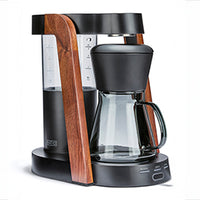 Ratio Eight S2
Ratio Eight S2
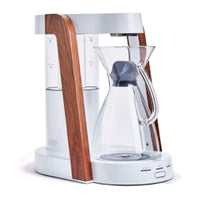 Ratio Eight Original
Ratio Eight Original
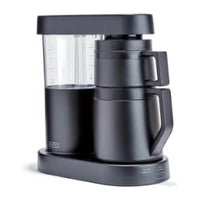 Ratio Six
Ratio Six
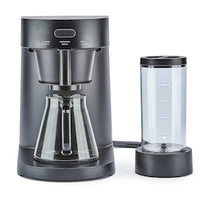 Ratio Four
Ratio Four
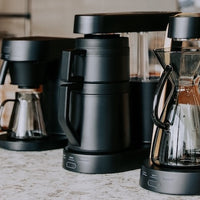 Compare Machines
Compare Machines







